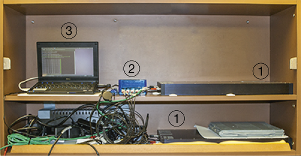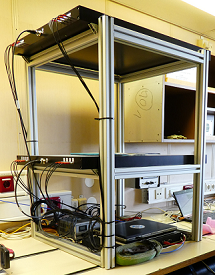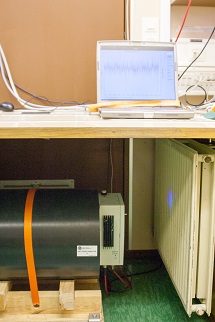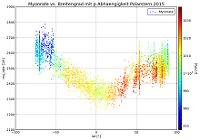URL: https://www.desy.de/school/school_lab/zeuthen_site/cosmic_particles/experiments/polarstern_project/index_eng.html
Breadcrumb Navigation
Polarstern Project
Polarstern Project
The measurement of cosmic particles from the North Pole to the South Pole is of great scientific interest, as the strength of the Earth's magnetic field with which the cosmic particles interact changes between the poles. Especially in marine areas, where there are so far only few data on cosmic particles, the measurement of those very particles is particularly interesting.
The Alfred-Wegener-Institut's German research vessel "Polarstern" crosses all latitudes from Arctic to Antarctic waters at yearly intervals. DESY has installed different scintillation counter experiments to measure the rate of cosmic muons: a first setup from 2010-2012, an improved detector from 2012-2016, a larger detector with new read-out electronics and higher sensitivity since 2017. Towards the end of 2011 a mini neutron monitor was taken into operation together with the universities Kiel (Germany) and Potchefstroom (South Africa).
The measurement of cosmic particles on board of the "Polarstern" has many advantages. Due to the Earth's magnetosphere, the fraction of cosmic particles with lower energy will be distracted to the poles. This results in a lower particle rate around the equator. The measurement of this latitude effect is a simple but efficient method to estimate the detector sensitivity. The main advantage is however that these detectors are the only ones taking data at almost all latitude positions on sea, and therefore are an excellent supplement to the worldwide cosmic weather observations. The current position of the "Polarstern" can be found here. Since 2012 a scintillation detector and a mini neutron monitor are also installed at the German Neumayer Station III in the Antarctica.









